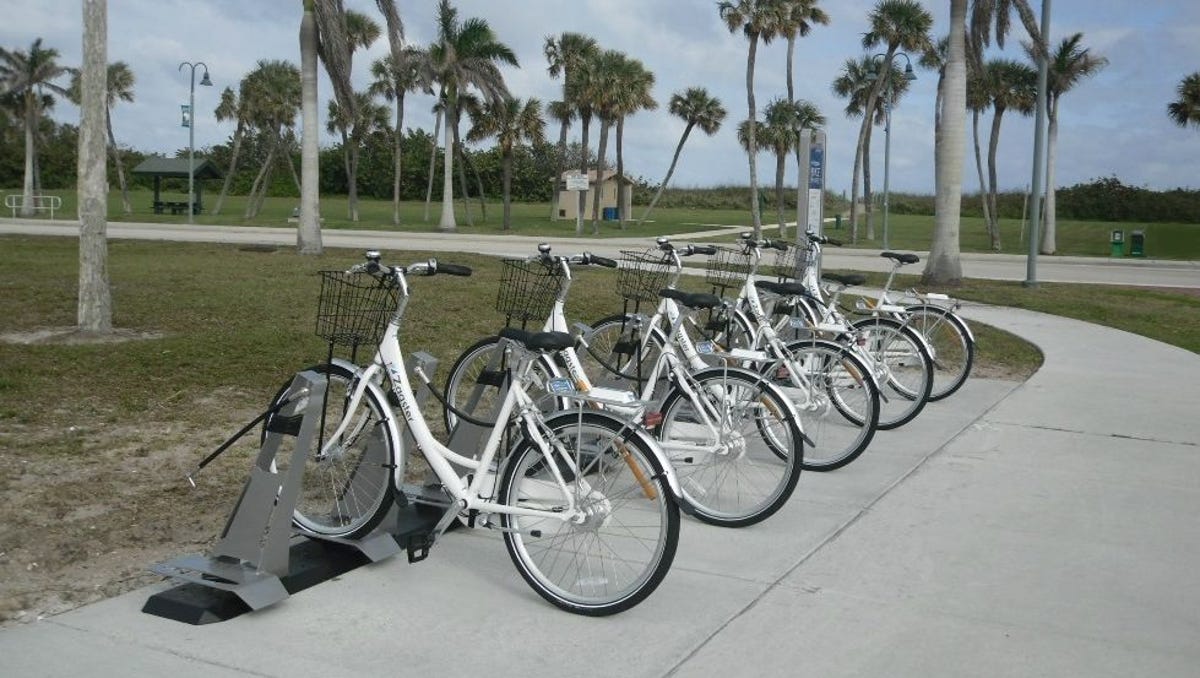
As of March 13, traumatic youth injuries from bicycle accidents have risen 167 percent in South Florida. A traumatic injury is defined as anything that has to do with a potential brain injury, and reports indicate that 91 percent of children who went to hospitals because of cycling accident injuries were not wearing helmets.
Yet, Treasure Coast cycling accidents are happening to people of all ages. With more cyclists on the roads, we thought it would be helpful to review bike safety and etiquette. Consumer Reports (CR) has released a guide with information on how to reduce your chances of being injured while cycling. We’ve outlined their recommendations below.
How to protect yourself from cars while riding a bike on the Treasure Coast
Pre-ride safety check
Many of us may be riding our bikes for the first time in a while. Make sure your bikes and equipment are in safe working condition.
- Helmet
Helmet use has been estimated to reduce the odds of head injury by 50 percent and the odds of head, face, or neck injury by 33 percent. Yet helmets don’t last forever and should be replaced every 5 years. If you need to buy a new helmet, check out CR’s bicycle helmet buying guide and ratings. If you already have a helmet, find out how to make sure it fits properly. Before using the helmet, check to make sure that it meets standards set by the Consumer Product Safety Commission. - Lights
When biking, it’s best to always use front and rear lights, even during the day. This will help make you more visible, especially at dusk and dawn. A forward-facing blinking white light will make you more noticeable to oncoming traffic, while a rear-facing blinking red light will make you visible to traffic behind you. - Clothes
Wear easily visible cycling clothing, such as a bright yellow, red, orange, or blue jacket or vest, to improve your ability to be seen. Think brighter colors rather than blacks or grays that could be easily overlooked or lost in shadows. Some cycling clothes also come with reflective stripes. The key is to be visible by contrasting with your environment.
Out on the road
Cycling safety doesn’t just mean protective equipment, it’s also about how you interact with motorists, pedestrians, and other cyclists.
- Obey the law.
The National Highway Traffic Safety Administration (NHTSA) reminds cyclists that “a bicycle is a vehicle, and you’re the driver.” This means that cyclists have to follow all traffic laws and obey street signs, signals, and road markings. Ride in the same direction as traffic when cycling on roadways. Running stop signs and other traffic control devices puts you and other cyclists, pedestrians, and motorists in danger. - Stay alert
Remember that potholes, bottles, glass, curbs, and sewer grates pose a bigger risk to cyclists than they do to cars. Keep your eyes up and look ahead at all times. - Use hand signals
Did you know that it is the law for bicyclists to use hand signals? Doing so communicates your intentions to turn or stop. Review proper hand signals here. - Be predictable
Try not to weave in your travel lane. While it’s necessary to avoid obstacles, inattentive riding and random movements can confuse or unnerve drivers. They may slow and avoid passing you because they don’t know what you are doing. Or they may aggressively pass, putting them, you, and other traffic at risk. - Ride single file
Stay single file no matter where you are riding. This allows traffic to give you three feet of space when passing without having to veer into the oncoming lane, and lets other cyclists pass you safely on the road. - Skip the tech
The NHTSA says cyclists should never wear headphones because they hinder one’s ability to hear traffic. And, just like driving, texting while cycling is a major distraction. Be safe and put your smartphones away.
Injured in a Port St. Lucie, Fort Pierce, or Vero Beach bicycle accident?
Call 866-930-6435 to speak with an experienced Treasure Coast bicycle accident attorney today
Cycling accidents can be particularly devastating. When a cyclist is hit by an automobile, there is an unequal amount of force sustained by the cyclist upon impact. This can lead to serious injuries, traumas, and even death. Not to mention, those injured in these types of accidents often have expensive medical bills, lost wages, and emotional and mental anguish. That’s why you should contact an experienced Treasure Coast bicycle accident attorney immediately if you or someone you know has been injured in a bicycle accident in Port St. Lucie, Fort Pierce, Vero Beach or Okeechobee.
The highly skilled personal injury attorneys at Hoskins, Turco, Lloyd & Lloyd will do everything in their power to make this unbearable and unexpected situation as stress-free as possible. Led by Board Certified Civil Trial Lawyer Steve Hoskins, our personal injury department has secured over $500 million for Treasure Coast accident victims and their families. We leverage our experience, expertise and resources to fight big insurance companies and get you the compensation you need and deserve.
We have four convenient office locations in Port St. Lucie, Fort Pierce, Vero Beach and Okeechobee. However, if you can’t come to us, we can either come to you or set up a virtual consultation via phone or video chat through our remote services. You can retain our representation without ever having to come into our office.
Call 866-430-6435 now to schedule your FREE case evaluation and consultation with one of our Treasure Coast personal injury attorneys.